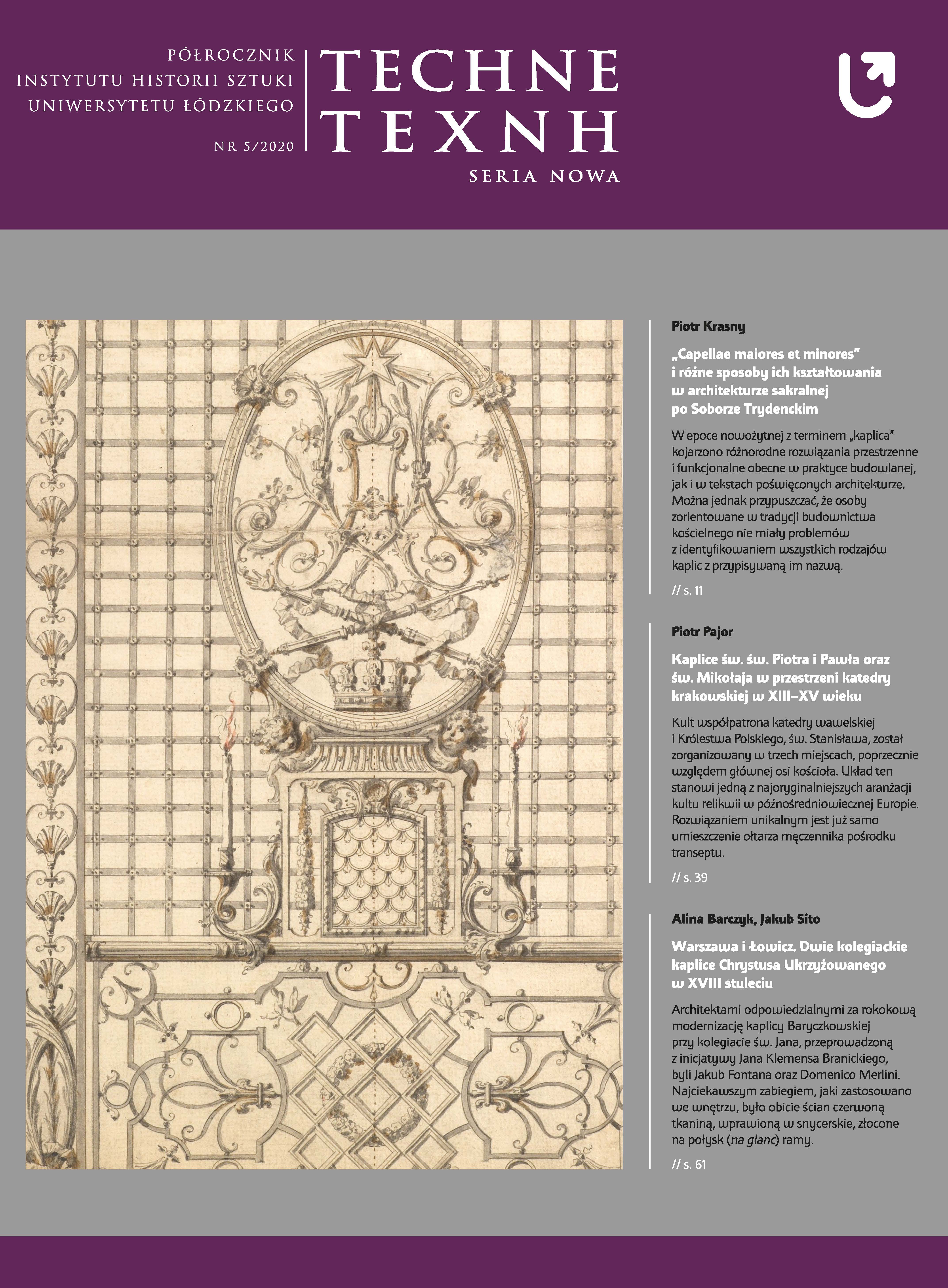Kaplice Najświętszego Sakramentu w kolegiatach ulokowanych w miastach rezydencjonalnych biskupów polskich. Funkcje – kształt architektoniczny – źródła inspiracji
Chapels of the Blessed Sacrament in Polish collegiate churches located in the residential cities of polish bishops. Features – architectural form – sources of inspiration
Author(s): Weronika NowakSubject(s): Fine Arts / Performing Arts
Published by: Wydawnictwo Uniwersytetu Łódzkiego
Keywords: collegiate chapels; chapels of the Blessed Sacrament; sacred art of the 17th and 18th centuries; patronage of bishops
Summary/Abstract: In the One of the problems that arose after the Council of Trent was the issue of where the Blessed Sacrament should be kept. During the session of the Council, this issue was not discussed in detail, only emphasizing the need to place the Eucharist inside the church building. It was commonly agreed that this place was to be dignified, clean and protected against sacrilege, but there was no uniform, universal formula for the location of the tabernacle in the temple. In addition to the well-known forms such as the placing of the Blessed Sacrament on the main altar and the sacramentals that functioned even long after the Council of Trent, other solutions were also accepted in the Catholic Church, which were also allowed by Charles Borromeo, as evidenced by one of the fragments of the First Milan Synod. A kind of novelty was therefore the creation of separate chapels in cathedrals and collegiate churches intended only to place the Blessed Sacrament, which can be divided into two types. The first, for which a magnificent model was the Lateran Basilica, was the storage of the Eucharist in the transept, distinctly continued in Bologna and Ravenna, the second – the location of the Blessed Sacrament in a separate, richly decorated chapel, initiated in the Papal State (the Chapel of Sixtus V in the Church of Our Lady Major, Cathedrals of Urbino, Fano, Gubbio and Fermo). Although the separate chapels of the Blessed Sacrament, popularized in Venice, functioned somewhat earlier at parish churches and were associated with the established Eucharistic fraternities, building them in cathedral and collegiate churches served to clearly distinguish between the space of the choir and the services celebrated in it which were related to the functioning of the chapter, and private adoration of the Blessed Sacrament. This well-established example of locating the Eucharist in a separate chapel was adopted in Poland, with which we can connect known cases of the bishops’ initiated translation of tabernacles into separate cathedral chapels –the cathedral in Kraków (1602), in Gniezno (1613) and in Włocławek (1618). In this context, one should also consider the chapels of the Blessed Sacrament founded by Polish bishops in residential collegiate churches located in their cities, including those adapted in chapels which originally had different functions, with distinct respect for the tradition of the place and the use of spolia (Warsaw, Nysa, Pułtusk), following the pattern connecting the storage of the Eucharist with the sepulchral function (Lipski’s chapel in Łowicz) and the pairs of chapels created in the 18th century connecting the invocation of St. Cross (altars with the tabernacle) with a Marian one (Kielce, Janów Podlaski, Wolbórz).
Journal: TECHNE. Seria Nowa
- Issue Year: 2020
- Issue No: 5
- Page Range: 95-115
- Page Count: 21
- Language: Polish

